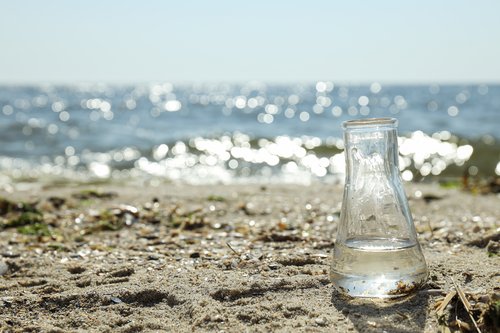
3 min read
The Six Chemical Classes Series
WLLW delves into how to recognize and manage harmful chemicals in domestic products, to create informed, health-conscious homes.

3 min read
WLLW examines the solvents found in common household products, the risks they pose and the alternatives available.
Solvents refer to a class of chemicals used to dissolve other substances. At home, solvents can be found in oil-based paints, paint thinners, varnishes, adhesives, cleaning products, cosmetics, aerosols, nail polish removers and colored markers. Solvents of concern include aromatic hydrocarbons – toluene, xylene and benzene, for example – and halogenated organic solvents such as methylene chloride, perchloroethylene and trichloroethylene. These can evaporate into the air, causing symptoms such as headaches, dizziness and memory loss. Long-term exposure may increase the risk of neurological disorders.
People who work with gasoline, paints and dry cleaning products are at the greatest risk of exposure to problematic solvents. Still, there are a number of ways we can be exposed in the home.
Solvents commonly found in household products can present health concerns. Inhalation of vapors may lead to respiratory issues, including coughing and shortness of breath. Aromatic hydrocarbons can have neurotoxic effects, causing symptoms like dizziness and headaches. Contact with solvents may result in irritation, dryness, dermatitis or eye irritation. Prolonged contact with certain solvents, particularly benzene, may increase the likelihood of cancer. Some solvents can cause liver and kidney damage, while others may pose reproductive toxicity risks.
Research has shown that the impact of household products on the environment goes beyond our homes and can affect wider ecosystems. Water Pollution is a concern, as disposal of certain products down the drain can lead to the release of hydrocarbons into water systems. These chemicals can harm aquatic life and disrupt the ecosystem’s delicate balance. Improper disposal of household waste can result in soil contamination, which can impact plant growth and enter the food chain.
Certain chemicals released into the environment contribute to global issues like ozone depletion and climate change. While household products alone may not be the primary drivers, their cumulative impact, along with industrial activities, adds to the broader environmental challenges we face. Production and manufacturing of some solvents containing Volatile Organic Compounds (VOCs) like benzene, toluene and chloroform, can evaporate into the air, affecting the overall air quality.
As consumers, there are several actions we can take to reduce the impact of chemicals in household products and contribute to a more sustainable lifestyle. Use paints, glues, inks and stain removers in well-ventilated areas and opt for mineral-based instead of oil-based paints. Further advice includes:
In the United States, the Environmental Protection Agency (EPA) oversees programs and regulations related to solvents and other chemicals. Key initiatives include the Toxic Substances Control Act which provides the EPA with the authority to assess and regulate chemicals to ensure they do not pose risks to human health or the environment. The EPA conducts risk evaluations and may take regulatory actions to restrict the use of certain substances.
Likewise there is the Safer Choice Program which encourages the development and use of safer chemical formulations in consumer products. Products that meet the program's rigorous safety and environmental criteria receive the Safer Choice certification label. Also in this field is the Volatile Organic Compound Regulations, with various federal and state regulators limiting the emissions of VOCs. These regulations are aimed at reducing air pollution and minimizing the impact of certain chemicals on air quality and human health. These regulatory initiatives collectively contribute to managing the use of solvents, promoting safer alternatives.
Photography: CrispyMedia/Adobe

3 min read
WLLW delves into how to recognize and manage harmful chemicals in domestic products, to create informed, health-conscious homes.

2 min read
We explore antimicrobials, taking a closer look at the importance of balancing their protective benefits and the risks of overuse.